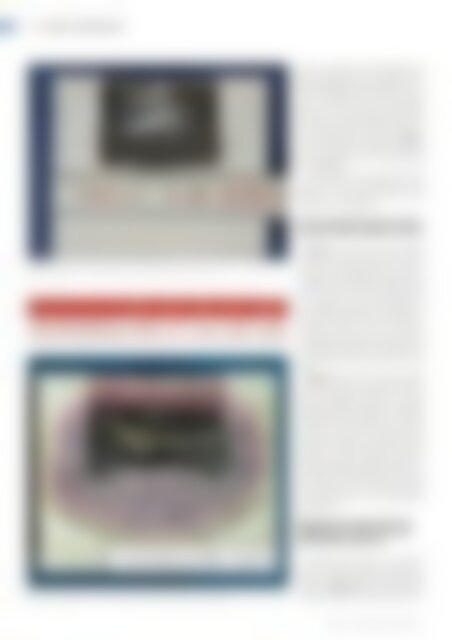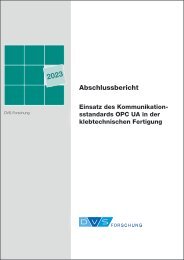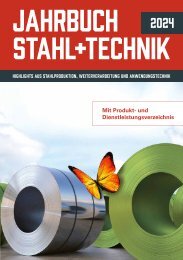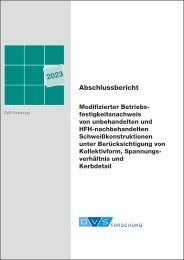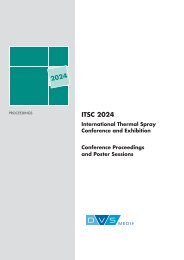STEEL + TECHNOLOGY 01/2020 EXTRACT
STEEL + TECHNOLOGY 01/2020 EXTRACT
STEEL + TECHNOLOGY 01/2020 EXTRACT
Create successful ePaper yourself
Turn your PDF publications into a flip-book with our unique Google optimized e-Paper software.
40 | <strong>STEEL</strong> <strong>TECHNOLOGY</strong><br />
ponent crucible tests. Steel grades with<br />
high manganese content regularly have<br />
lowered opening rates; therefore a 16 wt.-<br />
% Mn steel grade was included in the test<br />
series to study the effect of manganese<br />
content on the reactivity between ladle<br />
well filler and steel. Established conventional<br />
ladle well fillers were compared to<br />
newly developed compositions. Table 1<br />
shows the chemical composition of the<br />
two steel grades in wt.-% as measured<br />
with SEM/EDX.<br />
The evaluation of the crucible tests was<br />
based on the visual appearance of the<br />
bisection surfaces and microstructural<br />
examination via SEM/EDX.<br />
Visual examination of the crucible<br />
tests with ladle well filler and steel<br />
Figure 6. Setup of a crucible test with ladle well filler and steel (Picture: Purmetall)<br />
Table 1. Chemical composition of the steel grades used in crucible tests (wt.-%)<br />
Fe Cr Al Si Mn<br />
Steel 1 (ball bearing steel) 96.1% 1.7% -/- 0.5% 1.7%<br />
Steel 2 (high manganese steel) 78.3% -/- 2.7% 2.2% 16.8%<br />
Figure 7 shows one half of a bisected<br />
crucible with conventional ladle well filler<br />
and steel 1 (ball bearing steel). The refractory<br />
alumina crucible shows a distinct discoloration<br />
and noticeable cavitation inside<br />
of the structure of the crucible bottom.<br />
This indicates corrosion and infiltration of<br />
the crucible material by liquid phases of<br />
the ladle well filler or steel. Furthermore,<br />
the ladle well filler shows pronounced<br />
shrinkage that allowed the steel to flow<br />
along the crucible wall to the bottom of the<br />
crucible after reaching its liquidus temperature.<br />
Figure 8 shows one half of a bisected<br />
crucible with conventional ladle well filler<br />
and the manganese rich steel 2. The original<br />
layer of ladle well filler is completely<br />
dissolved and the crucible in its entirety is<br />
infiltrated with liquid phases from the ladle<br />
well filler or steel. The crucible structure<br />
also shows strong structural decay. This is<br />
caused by intense chemical reactions<br />
between the high manganese steel, the<br />
conventional ladle well filler and the alumina<br />
refractory. This high reactivity is a cause<br />
for the regularly low free opening rates<br />
during the production of high manganese<br />
steel grades.<br />
Microstructural examination via<br />
SEM/EDX of crucible-tests with<br />
ladle well filler and steel<br />
Figure 7. Crucible test 1 with conventional ladle well filler and Steel 1 (Picture: Purmetall)<br />
Samples were taken of the present<br />
halved crucibles to prepare polished sections<br />
for scanning electron microscope<br />
analyses. Figure 10 shows a SEM-picture<br />
of the structure in the contact-area of con-<br />
<strong>STEEL</strong> + <strong>TECHNOLOGY</strong> 2 (<strong>2020</strong>) No. 1


